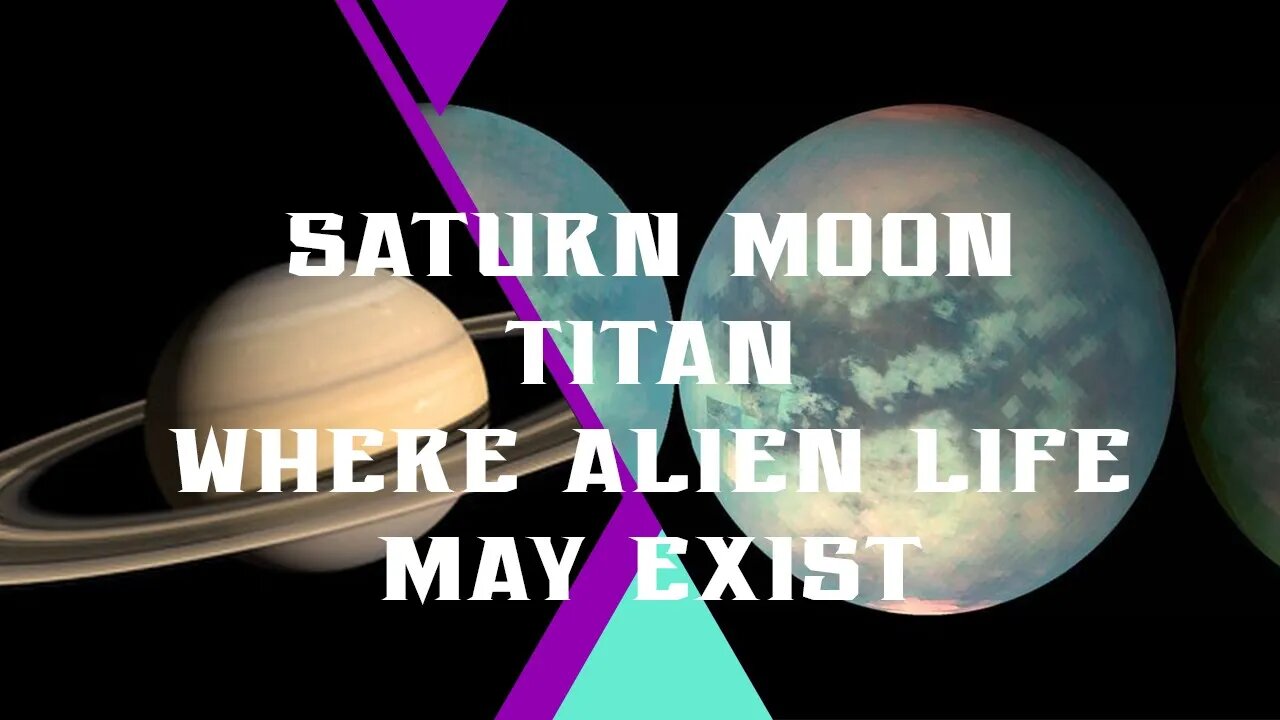Premium Only Content

Why Only Saturn Have Rings? | Most Beautiful Planet In Solar System | Advance Exploration Of Saturn
Why Only Saturn Have Rings?
Saturn's rings are thought to be pieces of comets, asteroids, or shattered moons that broke up before they reached the planet, torn apart by Saturn's powerful gravity. They are made of billions of small chunks of ice and rock coated with other materials such as dust. The ring particles mostly range from tiny, dust-sized icy grains to chunks as big as a house. A few particles are as large as mountains. The rings would look mostly white if you looked at them from the cloud tops of Saturn, and interestingly, each ring orbits at a different speed around the planet.
Saturn's ring system extends up to 175,000 miles (282,000 kilometers) from the planet, yet the vertical height is typically about 30 feet (10 meters) in the main rings. Named alphabetically in the order they were discovered, the rings are relatively close to each other, with the exception of a gap measuring 2,920 miles (4,700 kilometers) in width called the Cassini Division that separates Rings A and B. The main rings are A, B, and C. Rings D, E, F, and G are fainter and more recently discovered.
Starting at Saturn and moving outward, there is the D ring, C ring, B ring, Cassini Division, A ring, F ring, G ring, and finally, the E ring. Much farther out, there is the very faint Phoebe ring in the orbit of Saturn's moon Phoebe.
Most Beautiful Planet In Solar System
The planet Saturn: is truly massive and stunningly beautiful with its rings. It’s also home to amazing moons like Titan.
The planet Saturn is probably the best-known and most beautiful planet in the Solar System. Saturn’s rings are far more extensive and more easily seen than those of any other planet.
Saturn is the second largest planet in the solar system with a diameter of 120,000 km. It orbits the Sun every 30 years at a distance of about ten times that of the Earth. Saturn is the least dense of all the planets, its mean density being only 0.7 times that of water.
The visits by the Voyager spacecraft rewrote almost everything we thought we knew about Saturn, its rings, and its satellites.
Advance Exploration Of Saturn
Four robotic spacecraft have visited Saturn. NASA's Pioneer 11 provided the first close look in September 1979. NASA's twin Voyager 1 and Voyager 2 spacecraft followed up with flybys nine months apart in 1980 and 1981.
The real Lord of the Rings is Saturn, a massive outer planet boasting a set of rings about 27 Earth-wide. Being a gas giant like Jupiter, Saturn shares many of its attributes: a strong magnetic field generated by churning metallic hydrogen deep inside, raging storms in its gaseous upper atmosphere, and diversity of planet-like moons that are worlds unto themselves. Saturn’s rings and larger moons are visible even from small backyard telescopes.
Saturn was born right after Jupiter, roughly 4.5 billion years ago in the solar system’s early days. Both planets probably formed closer to the Sun and then migrated out to their current positions about 4 billion years ago. Their gravity likely lofted asteroids and comets all over the solar system, some of which slammed into early Earth and may have brought water here.
We know of more than 4,000 exoplanets — worlds orbiting other stars — and the statistics show us that most stars have planets. Many are Jupiter and Saturn-like words close to their stars, supporting the idea that our own gas giants moved during the solar system’s early days. One exoplanet we’ve found appears to have rings 200 times wider than Saturn’s! By studying Saturn and comparing it to similar exoplanets, we learn how solar systems evolve.
#mostbeautifulplanet
#exploringsaturn
#solarsystem
-
 LIVE
LIVE
SpartakusLIVE
9 hours agoMy BICEPS are NOT photoshopped
2,999 watching -
 1:15:26
1:15:26
Kim Iversen
10 hours agoFinal House COVID-19 Report: Claims Vaccines Were A Disaster But Operation Warp Speed Was a Success...
69.9K111 -
 1:14:19
1:14:19
The Anthony Rogers Show
12 hours agoEpisode 248 - Light Language & Intergalactic Gifts In The Higher Realms
52K3 -
 2:38:12
2:38:12
Tundra Gaming Live
8 hours ago $3.26 earnedThe Worlds Okayest War Thunder Stream
37K1 -
 10:57
10:57
Tactical Advisor
11 hours agoNEW Compact Echelon | Springfield 4.0 C (FIRST LOOK)
72.3K1 -
 1:23:56
1:23:56
Glenn Greenwald
11 hours agoBiden Pardons Hunter After Months Of Vowing He Wouldn't; Plus: Biden's Career Imprisoning Crack Addicts | SYSTEM UPDATE #374
130K128 -
 1:28:16
1:28:16
Barry Cunningham
7 hours agoBANNED ON YOUTUBE SERIES: Inside The Border Crisis! Barry Cunningham Interview With Border Agent
62.4K87 -
 2:18:59
2:18:59
WeAreChange
9 hours agoCOUP ATTEMPT?! Dems Trying To Usurp Control Of Military In Move Against Trump
120K35 -
 1:17:41
1:17:41
Josh Pate's College Football Show
8 hours ago $2.98 earnedCFP Rankings Reaction | Conference Championship Predictions | New JP Poll | Portal Chaos Ahead
39.5K1 -
 59:27
59:27
The StoneZONE with Roger Stone
9 hours agoWill America’s Sheriffs Aid the Deportation of Violent Illegals? w/ Sheriff Richard Mack | StoneZONE
36.7K3